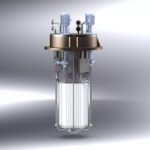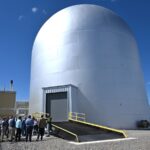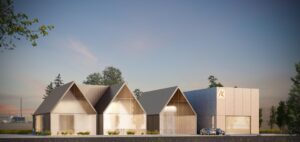
Advanced nuclear firm Aalo Atomics has secured new capital and regulatory backing to complete construction of its 10-MWe Aalo-X reactor at Idaho National Laboratory (INL). The project, recently selected under the Department of Energy’s (DOE’s) new Nuclear Reactor Pilot Program, will demonstrate cold criticality by July 2026 in an unusually aggressive federal milestone for advanced nuclear deployment.
The Austin-based company on Aug. 19 announced $100 million in Series B funding led by Valor Equity Partners, with participation from Fine Structure Ventures, Hitachi Ventures, NRG, Vamos Ventures, Tishman Speyer, Kindred Ventures, 50Y, Harpoon Ventures, Crosscut, Alumni Ventures, MCJ, Gaingels, and Nucleation Capital. The raise brings Aalo’s total capital to more than $136 million, including a $6 million seed round in 2023 and a $30 million Series A in 2024. That financial base gives the company leverage to finish construction of its first reactor next summer, Aalo Atomics CEO and co-founder Matt Loszak told POWER.
“This could be the first advanced nuclear power plant to turn on in the U.S. in decades,” he said. “This is not just a test reactor, but rather a full plant that will produce electricity.”
Loszak also revealed that Aalo is planning to site an experimental data center alongside the Aalo-X project at INL, potentially establishing a first-of-its-kind demonstration of how nuclear could directly power artificial intelligence (AI). Though Loszak declined to identify potential data center partners, he indicated the company is in “quite a few conversations with the relevant partners” to establish the experimental facility.
“The Aalo-X—the X stands for experimental—could actually be the world’s first co-located and co-built nuclear-planted data center,” he said. “In the past, there’s been maybe data centers installed near existing nuclear plants, but this would be the first time it’s been built hand in hand, and there are some cool efficiencies that come from that.” The prospect is being fueled by the company’s rapid evolution from concept to construction and by its alignment with DOE’s aggressive pilot program. “We’re really excited because there’s so much lining up so well for us to achieve this timeline,” he added.
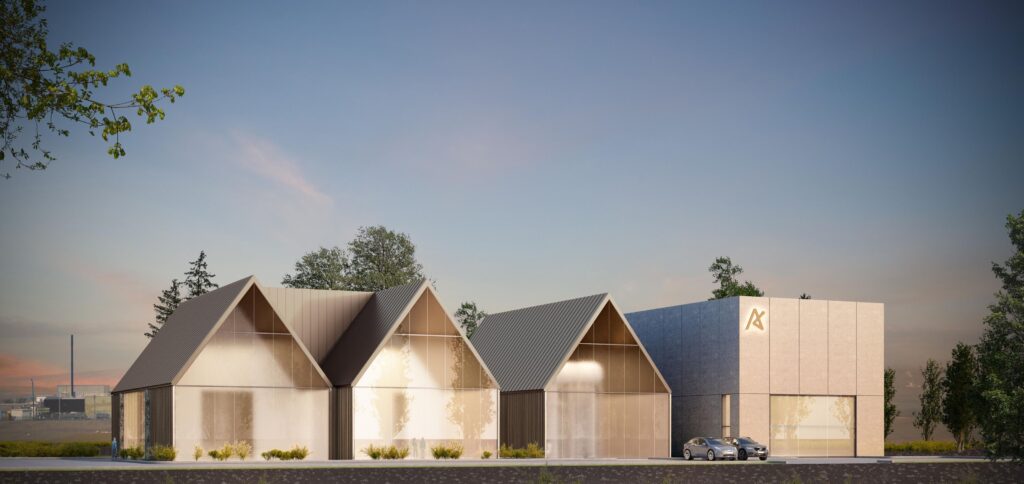
Aalo-X: First Step Toward Fleet-Deployed Nuclear for Data Centers
Loszak founded Aalo Atomics in late 2022 with Yasir Arafat, an industry veteran who envisioned and led the DOE’s MARVEL reactor design when the agency launched its microreactor program in 2019. (Arafat, who joined Aalo in October 2023 as its chief technology officer, was notably also pivotal in the conception of Westinghouse’s flagship eVinci microreactor program in the 2014 timeframe.)
The company’s strategy has centered on its factory-fabricated Aalo-1, a 30-MWth/10-MWe thermal neutron spectrum, and sodium-cooled microreactor inspired by INL’s MARVEL microreactor. “Aalo-X” is the name of Aalo’s sodium-cooled, UO₂-fueled, experimental power plant, which will be located at INL and is slated to validate the technology, economic, manufacturing, and operational approach for the Aalo-1 commercial reactor.
But in the past year, Aalo has sharpened its focus toward modular systems that can be co-located with data centers to meet the digital economy’s need for a secure, scalable electricity supply. In April, Aalo unveiled its flagship Aalo Pod, a 50-MWe extra modular reactor (XMR) that “is purpose-built to provide fast, reliable, clean, safe, and scalable on-site power for modern data centers.” Each Aalo Pod comprises five Aalo-1 reactors, which are fully modular to enable scalable deployment, from single 10 MW units to gigawatt-scale facilities. Each system is designed to “snap together like Legos” using standardized electrical and fluid interfaces, Loszak explained.
The company has pursued a manufacturing scale-up at its 40,000-square-foot Austin facility, which opened in August 2024. And, over the past eight months, it completed a full-scale nuclear prototype and made a “few major long lead procurements.”
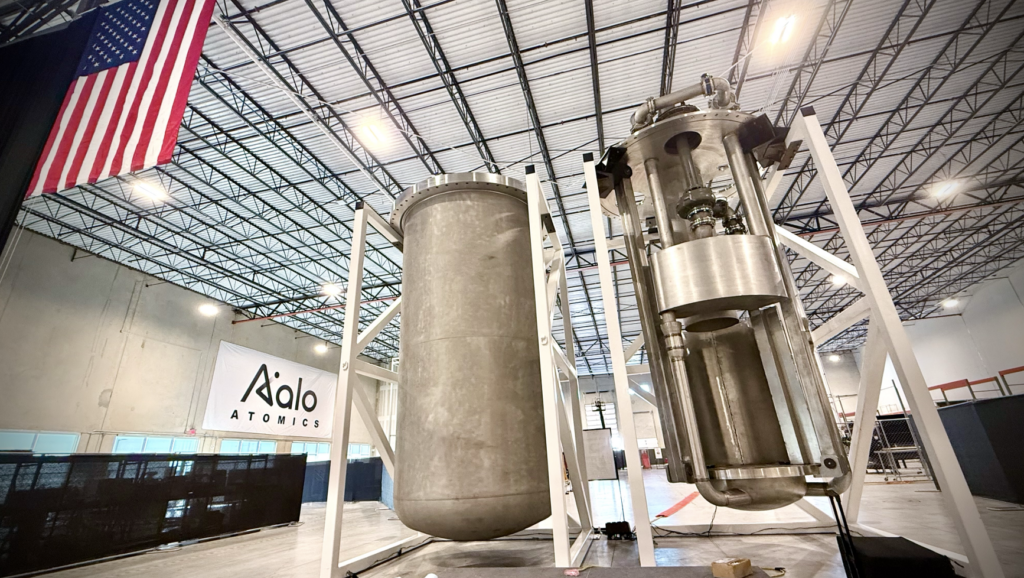
Fuel Evolution: From Exotic Hydride to Proven Uranium Dioxide
As significantly, Aalo recently prioritized speed-to-market over exotic fuel performance. While the company initially designed its MARVEL-inspired reactors around uranium-zirconium hydride (UZrHx) fuel—a specialized material offering excellent neutron moderation, but which requires custom manufacturing and supply chains—in June 2025, it announced a “bold move” to uranium dioxide (UO₂) fuel at 8% enrichment (LEU+), citing supply chain maturity and availability as critical factors for meeting hyperscaler demand timelines. The Aalo-X at INL, notably, will use standard, off-the-shelf 5%–enriched UO2. “I think very soon after, we’ll move up to 7% or 8%, and one day, we might switch to HALEU 20%—but only if the cost is right,” Loszak said.
Aalo acknowledges that the significant fuel transition wasn’t “an easy decision”—it involved “intensive research and problem-solving regarding reactor physics, thermal management, and numerous hours of brainstorming with existing fuel suppliers”—but yielded “valuable lessons in agility and flexibility, prioritizing speed and economics.”
“There’s a concept called the idiot index, which basically means how much does something cost versus how much do its raw components cost,” Loszak explained. “The fuel that we’re using has an index of two, and the fuel that a lot of our competitors—called TRISO—is using has an index of 10. The [levelized cost of electricity (LCOE)] contribution of that fuel alone is 10 to 20 cents per kilowatt hour. So even if the rest of your hardware were free, just by buying the fuel, your LCOE would be very expensive.”
Even with the pragmatic fuel choice, Aalo’s first product—the 50-MWe AaloPod XMR system—will carry higher upfront costs than traditional gigawatt-scale nuclear plants, Loszak noted. However, the overall economics remain compelling. “Our power will still be cheaper than many competitors using less energy-dense fuels or immature supply chains,” he said. “We’re hitting an economic sweet spot where customers will accept a slight premium because this product provides faster deployment and greater reliability.”
Customers—and especially from the data center sector—don’t want to wait years on an expensive facility, he said. “If you can build a smaller [facility], faster in a factory and ship it on site, that’s valuable to the customer.” Operational redundancy could also further boost the XMR’s value: While refueling a fleet of smaller reactors, “you can actually have power all the time because you’re only refueling one reactor in a fleet,” he noted.
Aalo In a Position to Break Ground Imminently
Last week, Aalo’s XMR project was one of 11 advanced nuclear projects selected as part of a request for applications (RFA) process by the DOE under its new Reactor Pilot Program. Launched on June 18 and rooted in President Trump’s Executive Order 14301 on “Reforming Nuclear Reactor Testing at the Department of Energy,” the pilot program creates a new fast-track pathway that leverages DOE authority to exempt certain “qualified reactors” from NRC licensing requirements. Its immediate goal is to demonstrate criticality for at least three advanced reactor concepts outside of the national labs by July 4, 2026, setting an unusually aggressive federal milestone for deployment.
Aalo’s selection will allow it to operate its Aalo-X on DOE land near INL with the target of achieving zero-power criticality within less than a year. While the selection does not grant the company capital, it will provide the team a “concierge team” to “ensure that any red tape (for example, waiting for signatures from the DOE) which might have previously taken weeks or months, will now take days,” the company said. “The rate-limiting step is now the time it takes to complete the engineering, design, and testing work needed to build a reactor and take it to criticality.”
Loszak told POWER the combination of DOE authorization and fresh capital has bolstered Aalo’s development schedule. “We’re in a position to actually break ground in a matter of weeks—we can’t say exactly when this is planned, but this is happening soon.” Such rapid progress, he added, “is going to surprise a lot of people” in the power industry, where nuclear projects typically take decades to realize.
Aalo’s confidence in meeting its aggressive timeline at the INL site stems from several converging factors that distinguish it from traditional nuclear development approaches, Loszak noted. The company has already spent the past two years building regulatory momentum under the DOE authorization pathway, he noted.
Since Aalo garnered a memorandum of understanding with the DOE in May 2024, it has moved swiftly to complete the Aalo-X’s conceptual design review. Aalo is now preparing its conceptual safety design report for the DOE. The company has also submitted its siting questionnaire for its preferred site, which “is a previously disturbed parcel of land within the INL boundary—already the subject of an approved environmental impact statement from the Versatile Test Reactor (VTR) program (which is 30X larger in power output than Aalo-X),” Aalo’s CTO Arafat wrote in June. “This gives us a huge head start.” Additional surveys will still be needed, including seismic boreholes and cultural/biological assessments, he noted. In addition, “DOE has issued an [environmental assessment determination (EAD)], formally determining that Aalo-X qualifies for an Environmental Assessment (EA, which takes months) rather than a more extensive Environmental Impact Statement (EIS, which can take years),” he said.
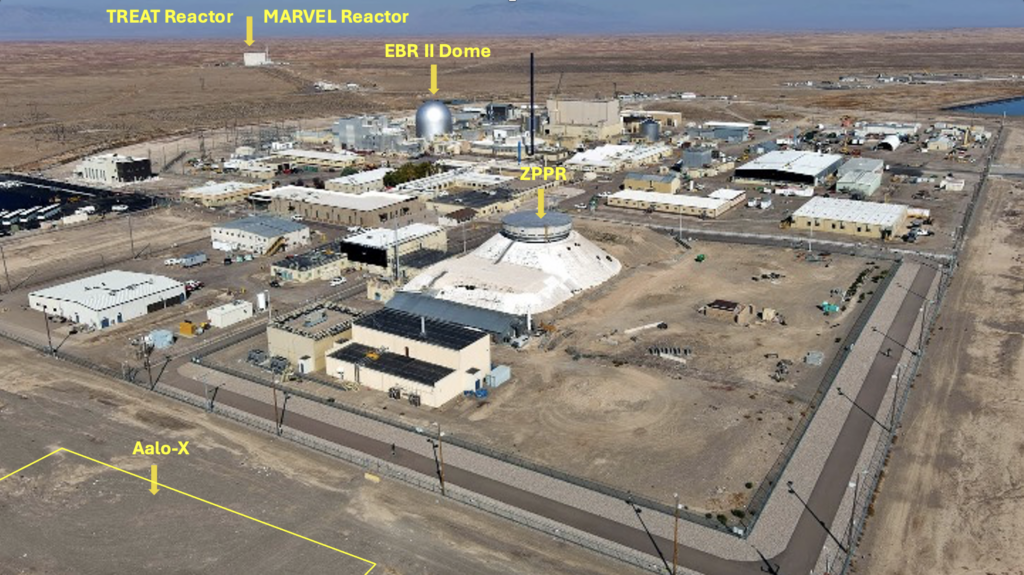
The speed advantage also reflects Aalo’s manufacturing-first approach, which emphasizes factory fabrication over site-built construction. “We’ve done a good job of vertically integrating quite a bit,” Loszak said. “We do have a supply chain for the fuel, for certain things like pumps or heat exchangers, but almost everything else in the reactor can be made in this factory. And we’ve been practicing making these things for the past eight months now.”
That practice has been validated through a full-scale non-nuclear prototype. “We’ve already built the reactor once in a non-nuclear setting,” he said. “And doing it multiple times helps you speed up, because we’re doing the same thing over and over again.”
Building the Aalo-X project, meanwhile, will be enabled by truck-transportable components and standardized field assembly. “All these, essentially, the reactor itself will be one module, and there will be around 30 additional modules to ship the balance of the plant. And these will basically fit on the back of a truck, and then on site, they’ll have interfaces for electrical and or any fluids that need to be exchanged,” Loszak explained. The company has also automated traditionally time-intensive processes. “We’ve actually been partnering with other third parties who can help to automate certain things, like going from the architectural renderings to final engineering drawings for the civil work,” he noted.
Zero power criticality, Loszak clarified, will mark an important but limited technical milestone. “Understanding what zero power criticality actually means” is crucial for industry observers, he stressed. “We’re hitting this milestone, but it’s not going to be full power operation, where it’s producing all the electricity and immediately powering a data center. We’re starting with a zero power criticality, which basically means just taking the reactor up to criticality and then bringing it back down so it’s not going to be very hot, it’s not going to be very radioactive. It’s just taking the fuel assembly to criticality.”
Following that initial demonstration, Aalo plans to add other hardware and perform more testing to slowly ramp up the power to full power operation. That will “happen over the subsequent months after criticality is achieved,” he said.”
The accelerated timeline will mark a substantial effort for the first-of-a-kind deployment, Loszak acknowledged. “And you know, this timeline we think we can actually get even faster in the future,” he said.
Future Prospects: Hyperscaler Demand, Waste Heat, and Beyond
But beyond the Aalo-X demonstration at INL, Aalo is advancing a suite of parallel initiatives. Texas A&M University System selected Aalo in February as one of four partners for its new “Energy Proving Ground” initiative at the RELLIS Campus near College Station. The project aims to develop up to 1 GW of extra modular reactor capacity, with site infrastructure and utilities designed to support factory-built deployment. The company has also acquired land in Texas to test sodium-coolant systems and refine serial production processes before licensing begins. On the utility front, Aalo has a memorandum of understanding with Idaho Falls Power to evaluate a fleet of seven Aalo-1 modules—totaling 75 MW—for clean, on-grid generation at INL. Last year, the public power company said it was negotiating a power purchase agreement to give the utility the “right to eventually purchase energy” from the 75-MW project, which could be sited at IFP’s new Energy Research Park.
Aalo, for now, plans to use its Series B funding to aggressively scale its workforce, doubling from approximately 60 employees to over 120 within the next year, focusing on recruiting premium engineering and manufacturing talent. The diverse backgrounds—spanning aerospace, software, utilities, and government—will be essential to meet Aalo’s fast-paced goals, and strategic hires are designed to accelerate licensing, manufacturing, and deployment processes, he said. A talented team is already taking shape. “Our head of commercialization was a former director of energy at Microsoft, Google, and Amazon, and did oil and gas for 10 years before that. Our head of manufacturing came from SpaceX. He was the head of manufacturing on Falcon Nine until they landed the first rocket.”
“I always think of startups as like surfing. There has to be a wave, but you also have to know how to surf. And we have a team that really knows how to surf,” he said. For now, a crucial benefit has been nuclear’s extraordinary, renewed momentum, which is pulling an” influx of talent from all sorts of other industries into nuclear now that everyone else is realizing that this is actually possible,” he noted.
On a broader scale, Loszak suggested Aalo-X is well-positioned as a proof point for broader commercial deployment, mainly given its strategic alignment with the Trump administration’s nuclear executive orders. The Executive Order on “Deploying Advanced Nuclear Reactor Technologies for National Security,” which addresses “defense critical electric infrastructure,” could create potential pathways for “gigawatt-scale commercial DOE-authorized nuclear plants and data centers on DOE soil,” he said. “Usually, DOE authorization was more often used for experimental test reactors. But if there’s a pathway to use DOE authorization for what the nation deems as defense-critical electric infrastructure, in other words, trying not to lose to China and Russia on AI and nuclear, then that could be a more streamlined pathway for several gigawatts of commercial-scale infrastructure,” he said.
Meanwhile, the market scale justifying broader deployment appears just as compelling. Loszak argued that hyperscalers are poised to require 40 GW of new capacity over the next five years, but existing infrastructure could struggle to support the demand. Adding new natural gas generation could require “new pipeline upgrades or new pipelines and new fracking,” while renewables could require “100 times more land than what we use,” potentially making siting difficult for time-sensitive data center projects.
In contrast, nuclear’s value proposition could even extend beyond firm, high-density power. “You could even use the waste heat from our reactor to cool the data center, which is kind of counterintuitive—using heat to cool something—but that’s possible with our high-grade waste heat,” he said.
For now, Aalo is readying to capitalize on the advantages. Loszak indicated that the company is set to announce “commercial partnerships soon” that could involve “both” investment and project development, with announcements expected within “four to five months.”
—Sonal Patel is a POWER senior editor (@sonalcpatel, @POWERmagazine).


